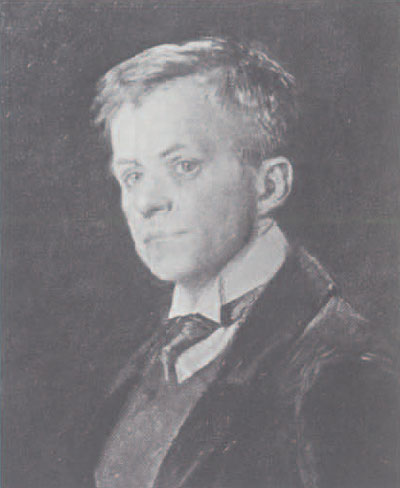 Not many men would, some sixty years after their death, be celebrated by a great research institution, but Eckley B. Coxe was to the University Museum, what, on a more opulent scale, John D. Rockefeller was to the Oriental Institute of the University of Chicago. The Museum owes a great debt to Coxe, for it was the combination of himself and two extraordinary men, C. C. Harrison and G. B. Gordon, which fostered the first major period of the Museum’s growth (1910-1916). As President of the Museum Coxe was extraordinarily generous, and by 1915 was paying half of its operating expenses personally; but his letters reveal that he also took his administrative responsibilities seriously and that, while he took some time to arrive at a decision’ it was always the ‘generous and just decision of a gentleman’ (C. C. Harrison in The Museum Journal, VII. 3, 1916, p. 141).
Not many men would, some sixty years after their death, be celebrated by a great research institution, but Eckley B. Coxe was to the University Museum, what, on a more opulent scale, John D. Rockefeller was to the Oriental Institute of the University of Chicago. The Museum owes a great debt to Coxe, for it was the combination of himself and two extraordinary men, C. C. Harrison and G. B. Gordon, which fostered the first major period of the Museum’s growth (1910-1916). As President of the Museum Coxe was extraordinarily generous, and by 1915 was paying half of its operating expenses personally; but his letters reveal that he also took his administrative responsibilities seriously and that, while he took some time to arrive at a decision’ it was always the ‘generous and just decision of a gentleman’ (C. C. Harrison in The Museum Journal, VII. 3, 1916, p. 141).
Coxe was born in 1872, descended from a prominent family which settled in the eastern United States in the 17th century and ultimately acquired extensive anthracite coal fields from which Coxe derived his wealth. Coxe always had a strong interest in Egypt and it was he, advised by Harrison and Gordon, who ensured that the Museum become a leader in Egyptological research. From 1905 Coxe paid for the salaries of MacIver, Woolley and, later, Fisher, for their expeditions and for the other costs of the Egyptian Section. He was not a dilettante. As Chairman of the Egyptian Section he expected, and received, detailed and frequent reports from the field, both from the ebullient MacIver (the work is now ‘fast and furious’: March, 1907] and the more restrained Fisher. Coxe himself, with Gordon, visited Buhen (caption 26, p. 20) in 1910 and, with MacIver’s advice, undertook excavations there himself, while his letters home show a detailed understanding of the historical importance of the discoveries made there.
Coxe was a modest man, who quietly supported many charities and struck his contemporaries as ‘a fine gentleman (and) a noble and generous citizen’ to the Philadelphia community. He avoided public recognition, insisting that the Museum Rotunda, opened in 1915, be named for Harrison rather than himself. Not until the Coxe Wing opened in 1926 was a section of the Museum formally dedicated to his memory.
Coxe’s death in 1916 did not end, but rather ensured the Museum’s Egyptological research, for he left an endowment of $500,000 which was primarily for the Egyptian Section. Until the nineteen fifties all the expenses of that section—curatorial, professorial and other salaries, gallery and collection maintenance, large field expeditions and publications—were met by the income from the Coxe endowment. Today of course, inflation has restricted the income’s functions. Egyptian expeditions are funded largely by government and institutional grants and even salary and overhead expenses are no longer fully met by the income. Nevertheless, it is Coxe’s generosity which still maintains the essential core of the Egyptology program; and which challenges us to find further sources of endowment that will enable the Museum to maintain itself as a leader in Egyptological research and training, as Coxe intended.
Much scholarship has stemmed from Coxe’s informed generosity. We can fairly say of him, what the ancient Egyptians said of their learned scribes: ‘it has come to pass that their names will endure forever, although they are gone, having completed their lives, and although their offspring are forgotten they made heirs for themselves of the writings and books of instruction which they made.’ [Papyrus Chester Beatty IV, trans. by W. K. Simpson.]
